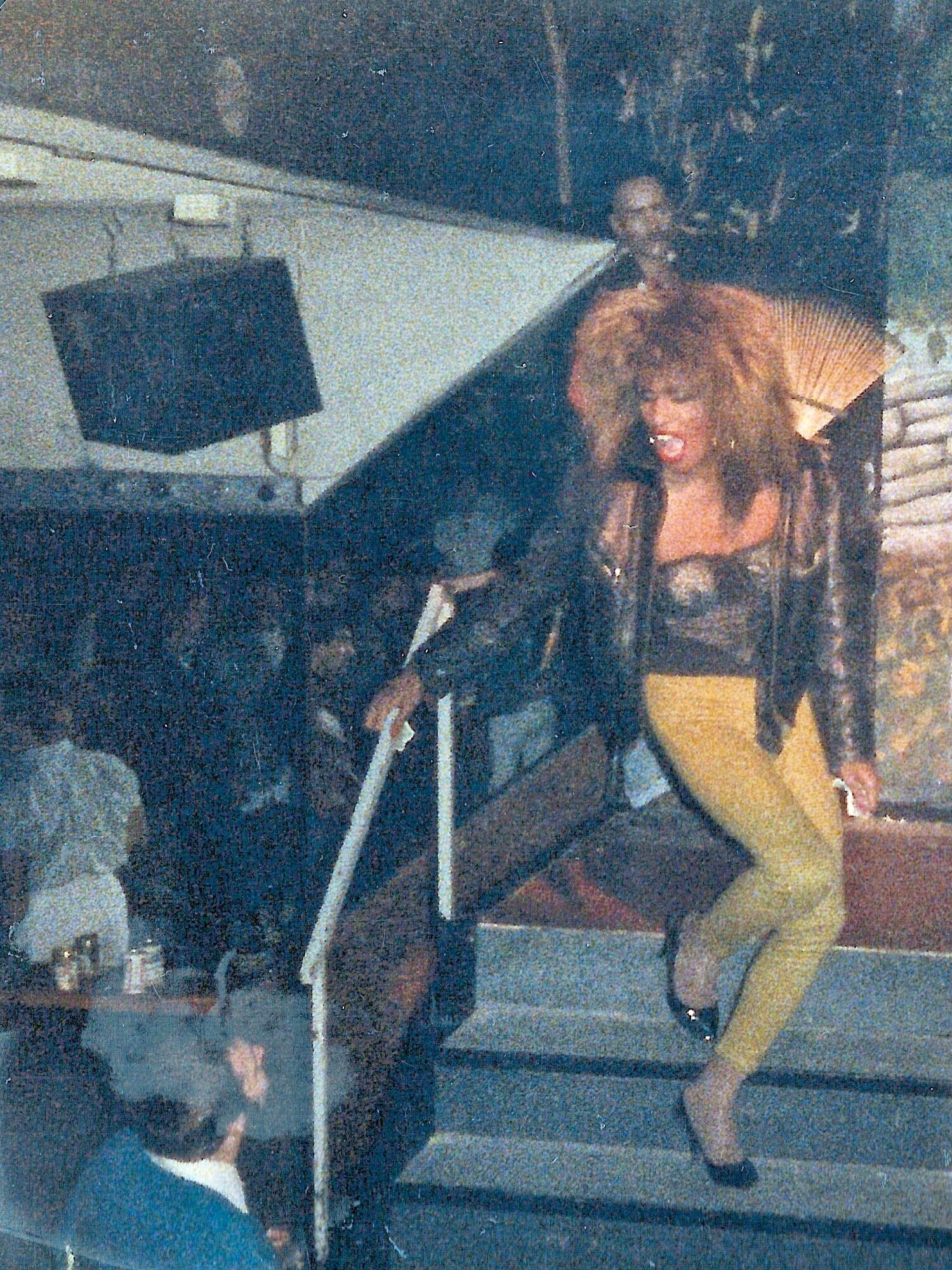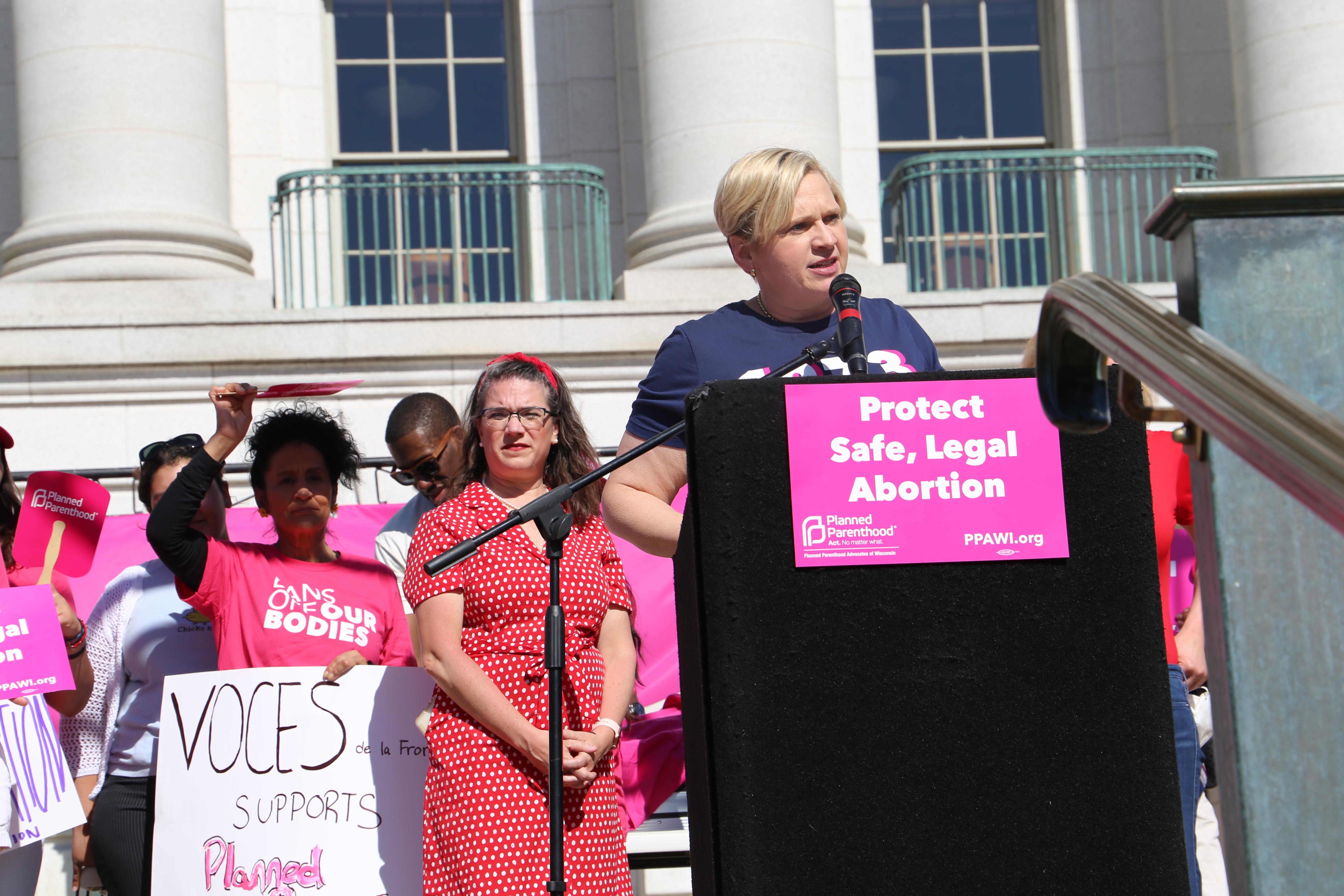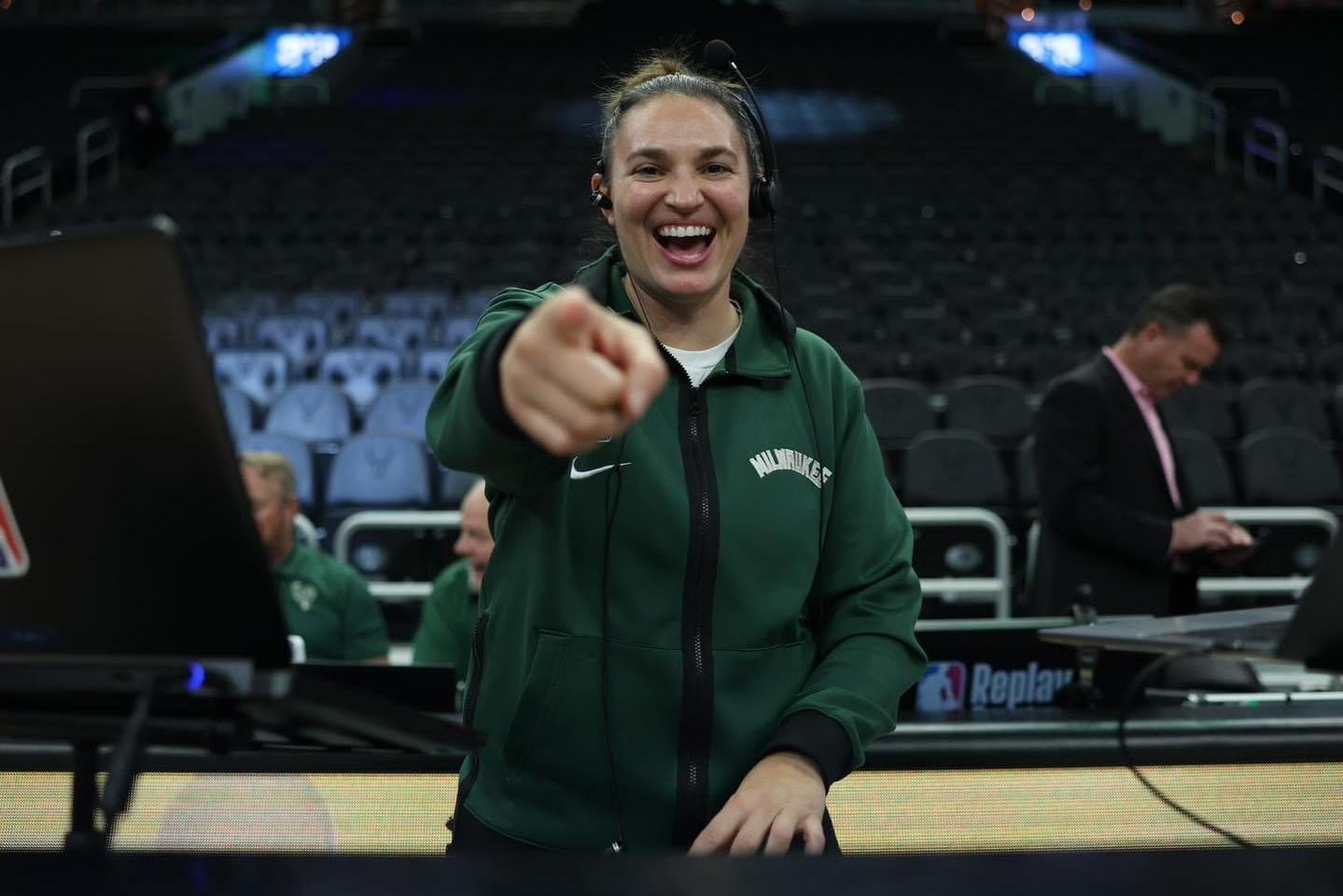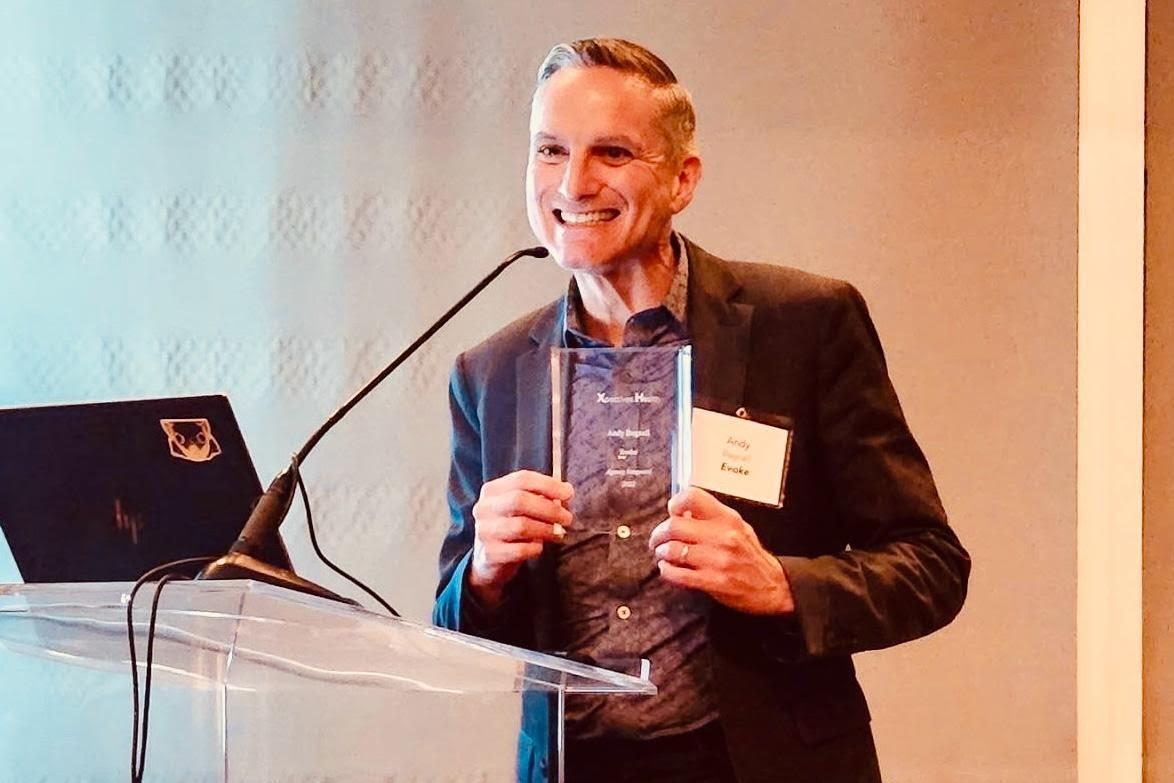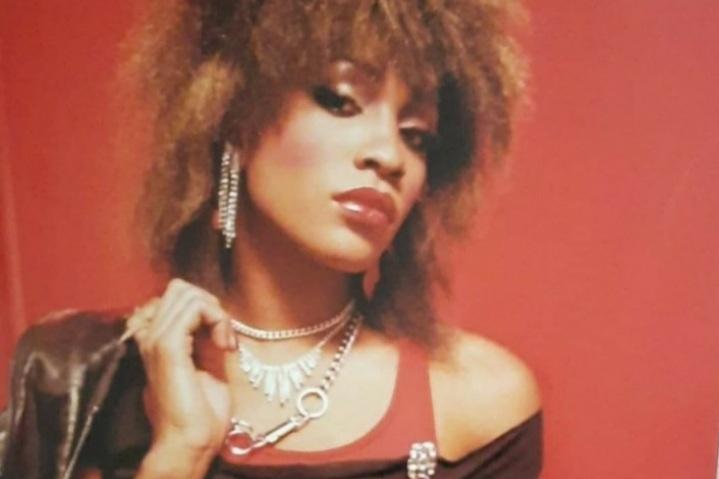
Eric Wynn: my life as a Club 219 girl

When Eric was five, his family relocated from Virginia to Wadsworth, Illinois – “literally the last stop before you hit Wisconsin” best-known for Onan’s Gold Pyramid House.
The Wynns were a Navy family, and Eric's father had been transferred to the Great Lakes Naval Base.
“We were the third black family to ever live in Wadsworth,” said Eric. “The first two actually had crosses burned on their lawns. But my father was 6 foot 5, black as midnight, and mean as hell. So, that didn’t happen to us.”
As a child, Eric was loud and proud from day one. He was “absolutely clueless” that liking boys and wearing his mother’s clothes made him different, even after his mother sat him down and gently told him so.
“My mother loved Diana Ross, so I decided she was my favorite singer too,” said Eric. “And here I am, this little kid, playing the Supremes over and over and over and dancing and singing along and knowing all the words. That was a major clue.”
Eric attended school in Warren Township, near Gurnee, which was more welcoming and more diverse. But it still wasn’t easy growing up. He remembers having crushes on actors Sam Elliott, Lee Majors, Randolph Mantooth, and more.
“I got a Six Million Dollar Man action figure just so I could take off his clothes,” said Eric. “For real.”
(In a twist of fate, Eric would later meet Randolph Mantooth – and Lee Majors’ famous wife, Farrah Fawcett.)
“I fought a lot because I was never in anyone’s closet,” said Eric, “and I didn’t make any apologies about it. I fought a lot and people learned to leave me alone. Yeah, it was a little rough and tumble in the beginning, but once they get used to you, they can’t ruffle your feathers anymore.”
“The Shack was cute, but we knew we could do better,” said Eric. “So we started slipping up into Milwaukee. So now, we’re going back and forth between Chicago and Milwaukee all the time. In Chicago, we could hang out on the streets and see your queers. Only a few bars would let us in, but we were way too young, and some of those bars were a little TOO intense for us. In Wisconsin, the drinking age was 18 and they weren’t really enforcing it. Like, if you look cute, you got in – you know what I mean?’
Eric remembers exploring 219, C’est La Vie, the Phoenix, Ball Game… “but we would mainly go to the big clubs because they were easier to get into. Papagaio was the main one: a big, old, wild disco that later burned down. Huge. Magical. Packed. Like being in New York. Every weekend. It was just insane.”
Papagaio was magical in more ways that one. Eric and his friends started going on Wednesday nights to see the drag show, featuring the Club 219 Girls, until one night they decided to come dressed themselves.
“Yeah, we decided to go to Papagaio in drag, so we all piled into someone’s old Buick and drove up to Milwaukee,” said Eric. “I remember what I wore: 1950s pointy, spiky pumps from the thrift store, black fishnets, a pink plastic miniskirt, a black turtleneck. My own hair, all shaved, and these long dangly rhinestone earrings on. And it was me, Tiffany, Frank, and Josie, and we all went in there wondering ‘what if they call us up on stage?’ I immediately said, ‘Then I’m going on stage.’”
“We were right up front when Miss B.J. Daniels came from backstage,” said Eric, “and she asked me if I knew how to perform because one of their girls was missing that night. She said, ‘can you do a number between Abby Rhodes and I?’ and my immediate response was ‘sure.’ I couldn’t believe it. My friends thought I was crazy. But I did it – and it was the first song I ever did – Madonna’s “Burning Up.”
“Now, here’s the crazy part – at the time, nobody really knew who Madonna was. Nobody knew if she was white or black. At that age, all you do is listen to music, and my DJ friends knew this song had just hit and knew it was going to be huge. And it was a hit that night!”
“Now, listen, I wasn’t perfect. I fell halfway through the show, and Mark Hunt (a 219 stripper I had a crush on) dropped down and threw my leg up to play it off. The audience went wild. I can’t even tell you how many tips I made. Even B.J. said, girl, that was one fabulous recovery. She said, ‘I work at Club 219 and we’re looking for a new girl. Would you be interested?’ It was a fairy tale moment. I couldn’t believe this was happening. But of course, I accepted.”
“I finished that night doing two more songs, and in-between the two of them, I went down and told my friends what I was just offered,” said Eric. “They said, you are crazy, but of course you’re going to do it right?” My friend Angie said she’d help me with all my clothes. ‘You’re going to be doing drag but you don’t have any drag.’ He basically lived in drag. He was born to be a woman. If he had lived longer, he would be a trans woman today.”
“For the next week, I was in a panic. I was taking the record needle back, writing down the lyrics, and doing it again and again, and practicing in my living room, trying to get my number right,” said Eric.
“And that’s how it all started. At Papagaio, in a pink plastic miniskirt, on a Wednesday night."
Becoming Erica Stevens
When Erica Stevens joined the cast, Club 219 was the premier club in Milwaukee, if not Wisconsin.
“If you didn’t go to 219, you didn’t go anywhere,” said Eric. “Papagaio and Park Avenue were these big old discos, but 219 was the real gay VIP. It was very chic, very exclusive. It was shockingly sophisticated for Milwaukee in the early 1980s.”
“The Club 219 Girls were expected to be seen in public a certain way,” said Eric. “Tony Canfora felt very strongly about this. We weren’t really allowed, especially in drag, to go out clubbing. We couldn’t hang out at this bar, because there were hookers. We couldn’t hang out at that bar, because there were drugs. There were rules, right up to the end. Every once in a while, BJ and I would sneak out – we’d go out the back door, tatter down the sidewalk in our heels, run into C’est La Vie and do a shot, smoke a cigarette, and run back to the club before we got caught. Everyone was so shocked to see us in a bar that wasn’t Club 219. We’d be like, ‘you never saw us here’ and run back before Tony or Del found out. Looking back, that was a little crazy. But that’s the way it was.”
He remembers the audience being almost exclusively gay, with a few straight female friends, and maybe a few straight couples, and standing room only every Wednesday and Sunday. Crowds came out – again and again -- for the 219 Girls because they were unlike any drag show they’d ever seen before.
“We had the privilege of being the MTV Generation,” said Eric, “We had to push it to the next level. We had to do more, more, more, more, more than had ever been done before. It was the 80s, it was a new era, and people really believed everything was about to change. So drag changed too.”
Eric remembers the signature numbers of the era: BJ Daniels “Total Eclipse of the Heart” and “Bette Davis Eyes,” Abbey Rhodes “Sweet Dreams Are Made Of These,” Ginger Spice “Keep the Home Fires Burning,” and his own “La Vie en Rose,” in the style of Grace Jones.
“The older girls were authentic – and that was something to live up to,” said Eric. “They didn’t need to rely on make-up or wigs or costumes to look like women. They just had it. They were soft, beautiful, elegant creatures. You never saw most of them out of drag. You never knew their ‘other’ names. Samantha Stevens, Tiger Rose, Miss Donnie, Rona, Doris Delago, Mama Rae, Josie Carter. All of the Ball Game girls. They were the mothers. It’s funny, I still consider Doris an “elder” even though she was our age. And she was so mean, and I loved that about her!”
“I loved Miss Donnie so much,” said Eric. “She was the most wonderful soul. She’d come out and get all kinds of hammered in a little sequin shift dress from 1959 and an enormous wig. You always knew when it was time to get her home.”
The old girls gave Eric solid advice from day one: 1) stay away from straight men 2) don’t let any of these queens put a needle in you and 3) drag queens are the cattiest women in the world.
“Of course, I fooled around with boys, but the fact is this, I was a virgin when I worked at 219,” said Eric. “So it was funny to hear rumors that I was a hooker. Someone started this thing that all the black queens were hookers. And I was like, I don’t even have sex. So what in the hell am I selling?”
“One weekend, Candy Stratton and I went back to Chicago and we stopped at my parents’ house,” said Eric, “and she’s like, THIS is where you live? This is like a country club.’ And I replied, ‘yes, but at 219, they think I’m a hooker!’ It was hilarious. She was stunned by the racism, but I said, hey let them think what they want. I don’t care. I was having too much fun.”
“Miss Donnie was filled with what she called ‘silly putty,’” said Eric. “She had lumps of filler all over her body that she would push and shape. She could push her chest up, push some hips down, flatten out her stomach. And she said, do not ever let anyone do this to you, no matter how beautiful you want to be. No matter what they say, do not do it. I was so young, so new, and so horrified by this.”
“Many girls who had these injections did not live as long as Miss Donnie. They had toxic complications and died quite young. And, looking back, all that needle sharing was so high risk in the earliest days of AIDS. But what did we know?”
Eventually, Eric found himself exactly where Miss Donnie warned him never to be.
“I was at a party with a whole bunch of queens,” said Eric, “and one of them has this big old bowl, and she’s just putting that needle in there, with dust flying around. You could see how unsafe it was. And I was like, no, no, no. You’re not putting that in me, honey. If I can’t contour it out, it doesn’t need to be done. When I start looking like a boy, my drag career will be over, and I am okay with that. We’re done here.”
“I learned about catty from Tina Capri,” said Eric. “Tina Capri just HATED me. I never knew why. And I don’t mean, she just was unfriendly or cold or standoffish with me. This girl snubbed me every time she saw me! Was it because I was so young and having too good a time? Was it because I was being paid to be pretty? I will never know. All I know is that I was out having the time of my life.”
Although all of Eric’s friends from home came to see him at Club 219, his parents weren’t totally thrilled about his new career.
“My father was none too happy about it, but my mother got a giggle out of it,” said Eric. “My parents never came to see me, although I asked them several times. I said, come on, you’ve got to come see me, I’m fabulous. And my mother would say, no, no, no, you do look good, but I can’t come see that.”
Representation matters
Club 219 was a magical experience – but over time, some subtle inequities started becoming clear.
“If I did any numbers by a white performer, people just stood there and stared at me like, what are you doing? I did Kate Bush and it went over like a lead balloon. Once they figured out Madonna was white, I was asked not to do her songs anymore,” said Eric. “I wanted to do her whole sound list but I was told no. The show managers would make ‘suggestions’ and you just had to read between the lines.”
Eric also discovered he was the lowest paid Club 219 Girl – and worse yet, he was excluded from a number of photo shoots.
“There’s a reason you can’t find many photos of me,” said Eric. “Nobody was pushing for me. I like to believe it was a very different time and things are different now for black performers.”
Eric does remember one specific, haunting photo – and the story it tells.
“Someone sent me a picture that broke my heart,” he said. “I’m doing Tina, and when you look at the picture, you can see the back of the bar. There’s two black queens sitting back there. At the time, there were many eight black men total who went to Club 219. I was the one and only black queen. That’s it. You’d be hard pressed to find a black person in there when there wasn’t a show. Maybe things changed in later years, but back in those days? No way, no how."
"And that’s what upset me so much about the Dahmer Netflix movie, because they made it seem like Club 219 was this amazing, integrated, black people space. I never watched it, and I have no desire to watch it, because I knew they got it all wrong. They talked to nobody in Milwaukee at all. They talked to no one who was there, at all."
“If you were black, you had to have three forms of ID to get into 219, and even then, you were on watch,” said Eric. “Make sure you keep to yourself, make sure you buy enough drinks, make sure you don’t get too drunk. You had to be careful.”
“POSE got so much right about this era,” said Eric, “and it was both triggering and rewarding to watch.”
“But back to that photo. They would come in to see me, and they would always stand in the back, on the dance floor, behind the stage,” said Eric. “I would always acknowledge them because I knew why they were there, and what it took for them to get in. I’d see those same queens every week. Until, all of a sudden, they started disappearing and nobody knew.”
“I mean, a lot of people were disappearing when AIDS hit. So you didn’t know what was happening. And you really couldn’t do much about it, because so many people were disappearing. And it was all happening so fast, you didn't know who was next."
"And I saw that photo, and I realized, it was just those boys left, out of that whole big group. And it just hit me like a punch.”
When La Cage opened in March 1984, Club 219 suddenly had a head-on competitor. Eric, and a few of his castmates, left Club 219 for more money. But a few months later, they were back at Club 219.
“La Cage was having a really rough start,” said Eric, “so I didn’t last there very long. Tony laughed about it, saying ‘I knew you’d come back.’ It was just so different over there. We didn’t have a dressing room. We had to walk over wooden planks, over mud, to get out onto the stage. It wasn’t quite on the same level of Club 219. Not yet. It got real fabulous, real fast, but that came later.”
Romance blooms
And then, Erica Stevens won the 1986-1987 Miss Gay Wisconsin Pageant – but she would only serve three-quarters of her reign. Ironically, none other than Tina Capri would inherit Erica’s crown.
What happened?
“I got booed up!” Eric laughs. “I’d actually met Ryan at 219. He came from California to visit his family in Cedarburg, and stopped into the bar to hang out. I was serving as a cocktail waiter on the weekends, and I saw him come in. I fell in love with him immediately. I connected with him that night and we became a couple. We were together for 15 years.”
“And it’s funny! For a long time, he had no idea I did drag. He had no idea where I was going on Sunday nights – and we were even living together at the time. One night, we went into M&M and a friend kinda sorta outed me as a show performer. My boyfriend was like, wait, what are you talking about? And I asked him to follow me outside. It was freezing cold, but outside we went. I told him, look, I’m Miss Gay Wisconsin, and I do drag, and you’re never allowed to come and see my shows. If you don’t like it, you can break up with me right now and I’ll never talk to you again. And I prepared for the worst.”
“But he said, honey, that’s fabulous. I think it’s wonderful. I can’t believe you were hiding part of your life from me. It was really cute. But I still said, listen, you’re never allowed to come to the show and see me. And one night, I was on stage and there he was in the audience! I looked at him all mean, but then I leaned down and kissed him, and he tipped me ten bucks! Everything was fine from that moment forth.”
“However, my boyfriend saw how green, and young, and clueless I was at self-promotion, and he said, ‘this is straight up bullshit.’ He encouraged me to know my worth and find my path. He said, ‘you can either stay here and be queen of Milwaukee for another four months or you can come with me.’
And so, Erica Stevens left the cast, the city, and the scene – and Eric Wynn moved to Palm Springs.
California adventures
Eric’s boyfriend was the district manager of a furniture company, so they could live anywhere they wanted. So the couple moved to Palm Springs, then San Diego, and finally Los Angeles.
“Los Angeles was literally everything,” said Eric. “I saw this girl walking down the street in a little skinny black spandex tube dress and flip flops. And I was so shocked that she was out there, in the middle of the day, just walking down the street. Was she a drag queen? Was she a hooker? What is she? And meanwhile, it’s just this girl, on a hot sunny day. I’d never seen anything like her before. And I thought, hey, if you can just around like that during the day, this is the place I want to be.”
Eric had done a few drag contests and beauty pageants while living in Palm Springs, just to “keep a toe in the water.” (Compared to Club 219, the queens didn’t seem to know what they were doing!) But after completing beauty school, he was now pursuing a new career as a high-end stylist at the Jose Eber Salon in Beverly Hills.
“First, I was his assistant, and then, I had my own chair,” said Eric. “I was still so young and silly – and suddenly, I was surrounded by all these Hollywood stars. I remember meeting Tom Selleck, and getting an autographed photo for my mother. While I was blowing out his wife’s hair, I asked her ‘how do you deal with all these women fawning over your husband?’ and she said ‘Oh sweetheart, you really are from the Midwest.’ It took me a long time to figure out what she was really saying.”
“I met Victoria Principal, whose husband was the best cosmetic surgeon in Beverly Hills. I was so caught up in it all, I thought I needed a nose job. I asked how I could get a consultation with her husband, and she took one look at me and said ‘you don’t need a fucking nose job.’ I saw all these people running around LA with bandages every summer, and I thought I needed one. So she said, fine, I’ll set you up with my husband, and you don’t even have to pay for it. I’m thinking, yeah, I’m finally getting this nose job. Instead, he told me ‘there’s nothing wrong with your nose, in fact, people are coming in here trying to get the nose you already have. Your width, your nostrils, your bridge, all perfect. You have beautiful almond eyes. If anyone tries to give you a nose job, walk out of that office immediately.’ What a valuable LA lesson for me to learn!”
“Bette Davis was a kick,” said Eric. “I was so excited to see this woman, and she seemed like she was 1000 years old. She went upstairs to see the colorist, and I followed her, because – my god – Bette Davis! She’s wearing this little hat with a red wig underneath. She sits down, takes off the hat and the wig, pulls out this gold lipstick tube and puts on this blood red lipstick. She lights a cigarette and just sits there and smokes. Puts out the cigarette, applies more lipstick, lights up another cigarette. They shampooed her, she put on that hat and wig, and out the door she went. It was insane.”
“One night, I heard all this rustle and bustle going upstairs, and then Jose called me to come upstairs,” said Eric. “And who’s upstairs but Elizabeth Taylor and Malcolm Forbes. They set up this entire table, with champagne, caviar, crudites, and all these little snacks, which Malcolm was eating while Elizabeth got her hair done. It was such a production. This was during the Passion era, when she had those little white spikes of hair, and my colleague Roxie had to color those exact same spikes perfectly. Elizabeth was absolutely gracious, lovely, gorgeous, and remarkable in person. Pictures do not do this woman justice.”
“Who else did I meet? Pia Zadora. Ringo Starr and Barbara Bach. Cheryl Tiegs. Jaclyn Smith. Kate Jackson. Farrah Fawcett. I was sick when Farrah died, because she was absolutely one of the sweetest, most genuine women you’d ever met. She was absolutely amazing.”
Eric grew tired of the salon, so he left and took some of his clients with him. Meanwhile, his friends were trying to get him to come to San Francisco – and he would not go anywhere near San Francisco.
“It’s just a bunch of old men in chaps,” he joked, “I don’t want to see that.”
One weekend, his friends came to Los Angeles for a party weekend. Under the premise of taking Eric to brunch, they lured him out to the car, where he fell asleep. When he woke up, they were crossing the Golden Gate Bridge into San Francisco. The rest is history.
“I arrived in San Francisco on a Sunday, called off work on Tuesday and Wednesday, and came back to LA on Thursday and put in my two-week notice. I packed up my car and drove up there. I’ve now been in San Francisco for thirty years – in a beautiful 2,000 square foot flat South of Market. I paid my California dues, you have no idea, and now here I am.”
Closing thoughts
Eric has worked for the four-story Williams Sonoma on Post Street for 14 years. “She’s downtown Julie Brown,” he laughs. But he still hasn’t gone back to drag, even after all this time.
“I would have loved to honor Rona’s memory as part his memorial show,” said Eric, “but girl, when is the last time I put on a dress? What do I even look like now? Just no.”
Eric keeps in touch with B.J. Daniels on Facebook Messenger, but he’s lost track of some of his surviving friends from his youth.
“Tiffany Thomas wanted a piece of the action back then, and I asked her, are you sure, because this can be a toxic environment and you are a little crazy,” said Eric. “So drag might be a good fit, and it might not be. She was just a little boy hanging around us, following us all around Illinois, going up to the clubs with us. And where is she now? Married and managing a Denny’s in rural Wisconsin. Life works in mysterious ways.”
Now approaching his 60th birthday, Eric reflects on the showgirl adventures he’s had – and his advice for the emerging starlets of Wisconsin’s future.
“Would I do it all again? I would – but I would do it very differently, knowing what I know now. I had no idea what was going on around me. I would know my words. I would have a lot of questions. And I wouldn’t allow myself to be pushed around the way I was.”
“To the youth, I say – pat attention. Keep your mouth closed, and your ears open. Pay attention. I run into twinks nowadays, and it’s always some old queen my age trying to sleep with them. That was definitely not the case when I was that age. The community was more focused on welcoming you, ushering you in, making you feel at home. They weren’t just trying to sleep with you and take advantage of you. And I see a lot of that happening, you know, so I want to tell them: keep your eyes open and your legs and your mouth shut. Pay attention to what’s going on around you. People are going to tell you all kinds of things. See what they actually do, not what they say.
“Social media has changed how we see ourselves and the world. So, please, put your phone down. Put the camera down. You’re never going to re-live this moment – so live through it and experience it. You’re missing so much because you’re looking at pictures, and competing with photographs, and you’re losing the moment.”
 Eric Sean Wynn today
Eric Sean Wynn today
recent blog posts
April 26, 2024 | Michail Takach
April 26, 2024 | Michail Takach
April 12, 2024 | Meghan Parsche
The concept for this web site was envisioned by Don Schwamb in 2003, and over the next 15 years, he was the sole researcher, programmer and primary contributor, bearing all costs for hosting the web site personally.
